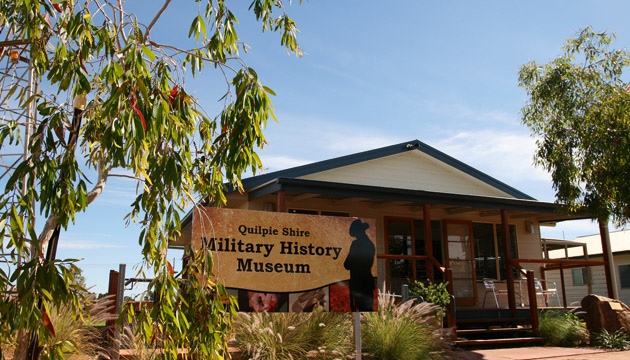About to celebrate its centenary, this south-western Queensland town is becoming known for its art and coffee culture.
Story and photos by Annabelle Brayley
Located 955 kilometres west of Brisbane in far south-west Queensland, Quilpie is a town inherently linked to art and good succession planning. The town showcases much of that artwork in three galleries and through various artworks around town, including a mural and several beautifully created, opal-inspired mosaics on the main footpath. A couple of clusters of sheep at one end and steel silhouettes of cattle and a stockman meandering down the middle of Brolga Street proclaim its pastoral origins. Backgrounded by the deep ochre reds, vibrant cobalt blues, mulga green and gibber brown of the surrounding landscape and the flashing colours of the precious boulder opal that is unique to the area, Quilpie inspires artistic endeavour.
While the district’s history resonates with the pastoral pursuits of several intergenerational families, the origins of the township are firmly connected to the arrival of the railway in April 1917. Quilpie was gazetted just after the last spike was bashed through the last length of iron track, when there were about 30 people living there. By the late 1920s the population had grown to 700 as the wool industry demanded shearing teams, gear, food for all concerned and hotels.
Today, Quilpie is as economically and emotionally self-sustaining as ever. As a new generation moves into various businesses in town, it is ensuring succession. Courtney Cameron, 25, came home in 2010 to undertake a tourism traineeship with Quilpie Shire Council. Three years on she opened 27 Gallery Coffee beside her mother’s business, Quilpie Country Collections. A talented artist who learned the bones of painting through the Flying Art School, Leah Cameron is well known for her local landscapes but even more so for her beautiful interior and still-life portrayals. Coffee and art are proving the perfect mix. “Business throughout the tourist season has generally been even better than I imagined it would be,” Courtney says. “Coffee drinkers love real coffee and there’s no doubt it’s been a stop sign for the town.”
This story excerpt is from Issue #110
Outback Magazine: Dec/Jan 2017










